In Focus: The lions of Trafalgar Square by Sir Edwin Landseer
The famous bronze lions that stand guard at Trafalgar Square are among the world's most famous sculptures. Jack Watkins takes a look and pays tribute to their creator, Sir Edwin Landseer.

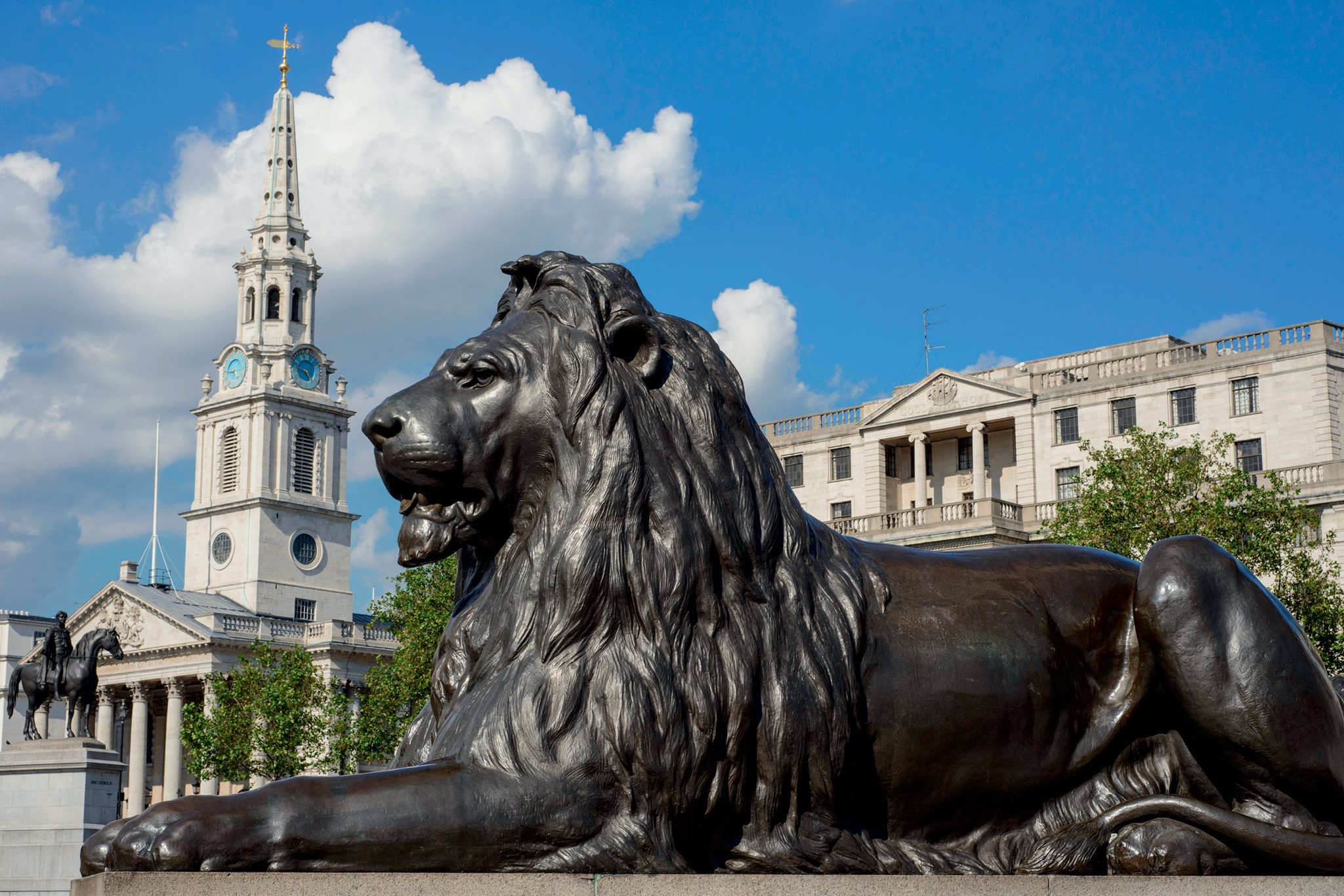
Trafalgar Square's black lions are treasured, albeit taken for granted, in much the same way that the animal paintings of their creator are among the nation’s most beloved, but disdained artworks. Sir Edwin’s Landseer’s The Monarch of the Glen, Dignity and Impudence and The Old Shepherd’s Chief Mourner exert emotional appeal, but are ignored in fashionable art circles.
The regal poise of the bronze quartet of lions beneath Nelson’s Column astounds the casual passerby, even as others sprawl all over them to have pictures taken. This is part of their charm: the lions are imposing and dignified, but not too lofty to discourage affection. They are grand adornments of the street scene, yet reflective of the square’s friendly informality.
The commission, when it arrived in 1858, was controversial. Landseer was, after all, a painter, not a sculptor. However, he was the age’s foremost animal artist, renowned for his painstaking approach to anatomical detail. He was a favourite in Society’s upper circles and his works had mass appeal. He was also fascinated by lions. He had visited the Tower of London menagerie, dissected the big cats, sketched and painted them.
‘The lions in Trafalgar Square are for me the centre of London… the only monument in this vast capital worthy of a second visit… Did such a work exist now in Venice, what immense folios would be issued about it!’ — Richard Jefferies in ‘The Toilers of the Field’ (1892)
Frederic G. Stephens’s 1880 biography recounts an evening when friends assembled in Landseer’s home in St John’s Wood, London. The visitors were somewhat alarmed when the gathering was interrupted by a manservant who, with Jeevesian imperturbability, entered the room to ask of his master: ‘Did you order a lion, sir?’ They were relieved to learn that an elderly lion had died at the Zoological Gardens in nearby Regent’s Park and it was clearly a natural response to place it in a cart and drive it to the artist’s gates. From it arose the fine study The Old Lion, Nero.
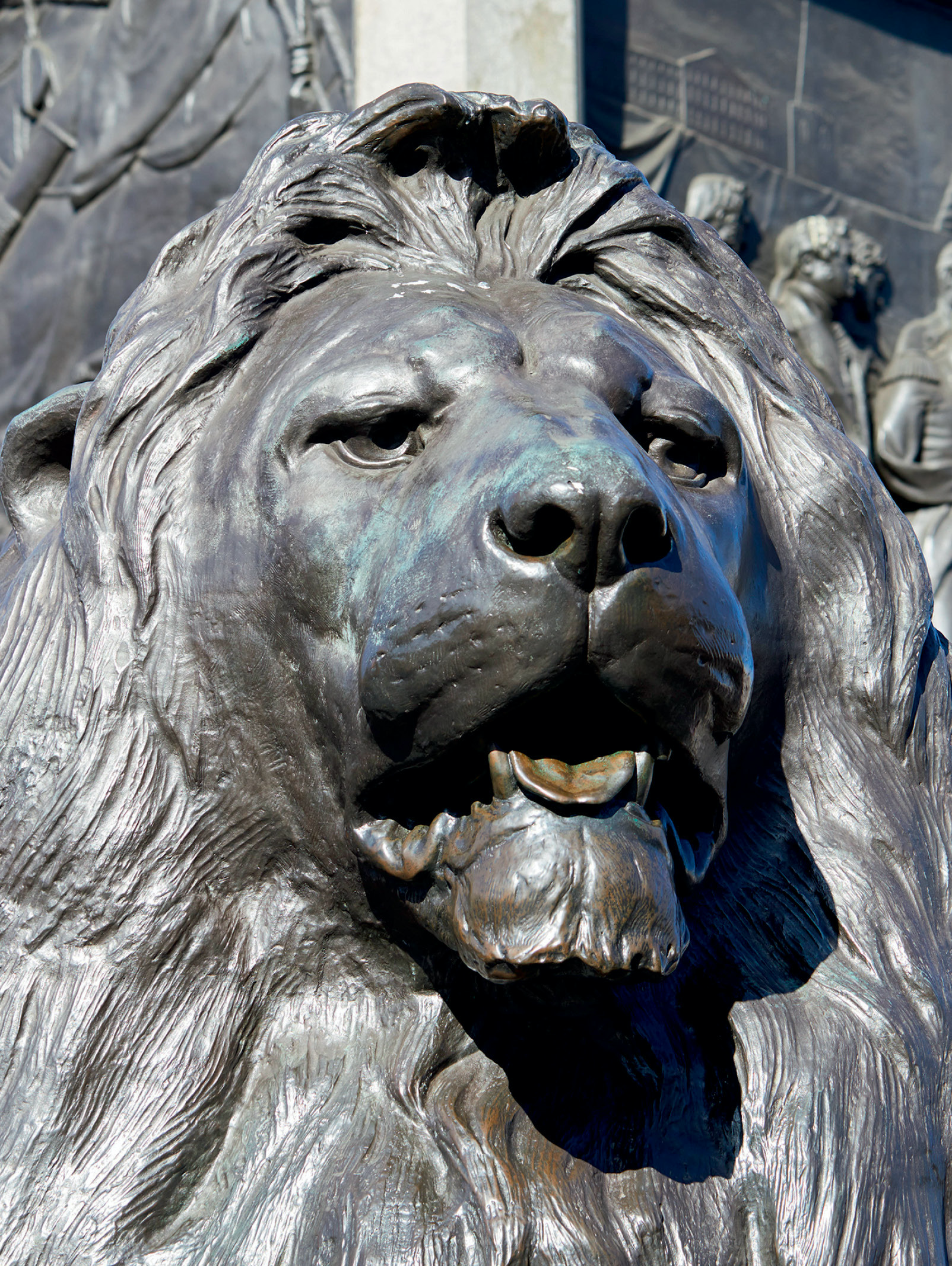
However, creating the Trafalgar Square lions proved a lengthy process, so protracted that it attracted press ridicule. Although he was a Society figure, Landseer’s mental disposition was unstable. He suffered from breakdowns and depression and often left commissions unfinished. He was still making studies of lions in London Zoo as late as 1862, the process being complicated by confusion over the sculpted lions’ aspect. One idea was for them to be standing, mouths wide open, apparently roaring. Ultimately, the commission required the lions to be couchant, not standing or prowling, thus more reflective of Nelson’s dignified heroism. A painting of about 1865 by John Ballantyne (now in the National Portrait Gallery) shows Landseer at work on a spectacular clay model of a lion.
‘By the nobility of the treatment and the majesty of the pose… it was freely confessed that Pillar and Lions together formed the most magnificent monument in the metropolis’ — Landseer biographer James A. Manson
Finally, four bronze casts were made at the end of 1866 by Baron Carlo Marochetti, the sculptor in whose studio the artist worked on the project. By the end of January 1867, with all four lions about to be revealed, Punch greeted the sighting of the first by impudently declaring that: ‘The first lion intended for the Nelson Monument has broken from its distinguished keeper, Sir Edwin Landseer, and is now at large — in fact, very large — in Trafalgar Square. The inhabitants are gradually regaining their composure. A poet in the neighbourhood has already begun a poem, entitled A dawning of a Roarer.’
Days later, Landseer was present at an informal unveiling of the colossal statues—20ft long, 11ft high and weighing seven tons. There were some complaints about their ‘sphinx-like’ resemblance (the paws were modelled on those of a cat) and one individual was arrested for flinging stones at them. However, when the troubled artist’s public funeral took place six years later, the lions were decorated with mourning wreaths, reflecting a nation’s gratitude.
Exquisite houses, the beauty of Nature, and how to get the most from your life, straight to your inbox.
'‘Thank you Sir Edwin. England at last has “done her duty”’' — The caption to the 1867 Punch cartoon (above) of Sir Edwin Landseer's lions in Trafalgar Square
The life and times of Sir Edwin Landseer
In a photograph of 1860, Sir Edwin Landseer (1802–73), seated with his sketch pad, regards the camera with fiery eyes, his hair tousled, whiskers bushy, the mouth pugnacious. Once, when spotted on an annual visit to his beloved Highlands, he was mistaken for a poacher due to his short, sturdy build. He would stay in Border country with fellow dog lover Sir Walter Scott, who reported that Landseer had ‘drawn every dog in the house’, later describing his canine paintings as ‘the most magnificent things I ever saw — leaping and bounding, and grinning on the canvas’.

Landseer, however, was a Londoner, growing up in St John’s Wood, gazing over the fields that still dominated between Marylebone and Hampstead and honing his skills drawing sheep and cows. He quickly established himself and introduced a menagerie to his spacious villa and garden, built on former farmland.
Landseer was a wit, raconteur, lifelong bachelor and dandy. A friend of Queen Victoria and Prince Albert, the artist was frequently seen at the great houses of England, yet he suffered a breakdown at the age of 37 and struggled with mental health for the rest of his life. The Queen described his death as a ‘merciful release, as for the last three years he had been in a most distressing state, half out of his mind, yet not entirely so’.

Curious Questions: When did we start observing a silence in remembrance of the victims of war?
The tradition of holding a two-minute silence to remember those who gave their lives in war dates back to 1919,
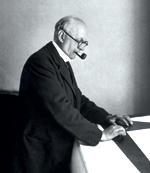
Great British Architects: Sir Edwin Landseer Lutyens
Our new series begins with a look at one of the most celebrated architects of the 20th century, Sir Edwin
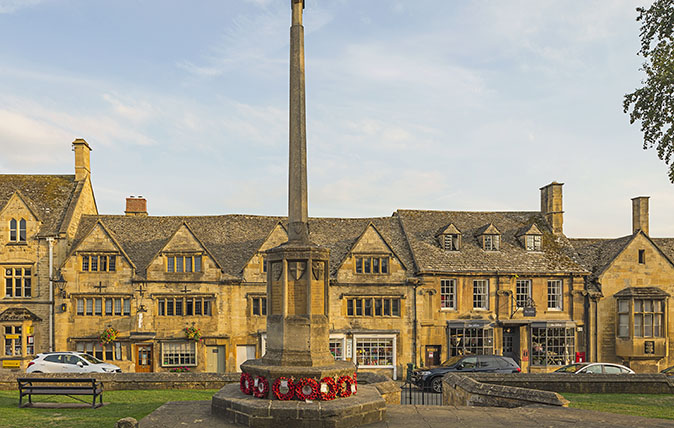
How an Arts-and-Crafts architect fought to preserve the beauty of Chipping Campden
Clive Aslet tells the remarkable story of Frederick Landseer Griggs, his struggle, his triumphs and his legacy. Photographs by Justin
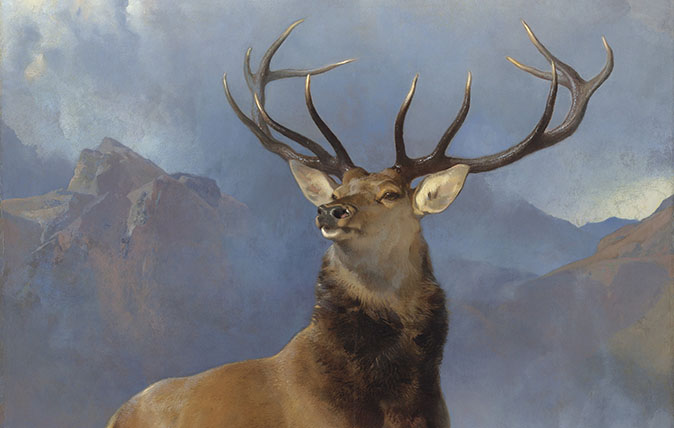
In Focus: The many lives of Landseer's 'The Monarch of the Glen', the eternal symbol of Scotland
The most famous of Victorian paintings took on a life of its own as a marketing icon, romantic symbol of
Jack Watkins has written on conservation and Nature for The Independent, The Guardian and The Daily Telegraph. He also writes about lost London, history, ghosts — and on early rock 'n' roll, soul and the neglected art of crooning for various music magazines
